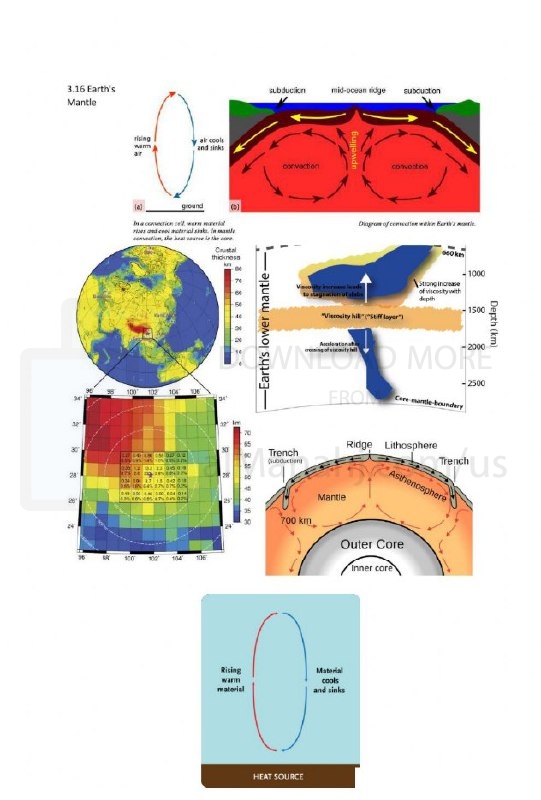| You are here: Almanahj Website ⇒ American curriculum ⇒ 7th Grade ⇒ Geology ⇒ Term 1 | ||
|---|---|---|
Worksheet about Earths Mantle | ||
|---|---|---|
| Subject: Geology | ||
| 7th Grade | ||
| Term 1 | ||
| Year: 2023/2024 | ||
| Size: 387.8KB | ||
| Number of clicks: 196 | ||
| Publish date:November 28, 2023 | ||
| Added by: Eman | ||
| Last download date: 2024-09-13 05:43:08 | By: theodor Grace Vogt | |
| File info: The Earth's mantle is a layer that lies beneath the crust and extends from the base of the crust to a depth of about 2,900 kilometers (1,800 miles). It is the largest layer of the Earth by volume and is primarily composed of solid rock. Key features and characteristics of the Earth's mantle include: 1. Composition: The mantle is predominantly made up of silicate minerals, with the main minerals being olivine, pyroxene, and garnet. These minerals contain elements such as silicon, magnesium, iron, and oxygen. The mantle's composition is richer in magnesium and iron compared to the crust. 2. Physical Properties: The mantle has high temperature and pressure conditions due to its depth within the Earth. The temperature increases with depth, reaching up to 3,700 degrees Celsius (6,700 degrees Fahrenheit) near the boundary with the core. The pressure also increases significantly with depth. 3. Mantle Convection: The mantle exhibits convective movement due to heat transfer from the Earth's core. This process, known as mantle convection, is driven by the temperature differences within the mantle. Warmer material near the core-mantle boundary rises towards the surface, while cooler material descends towards the core. This convective motion plays a crucial role in the movement and interaction of tectonic plates on the Earth's surface. 4. Upper Mantle and Lower Mantle: The mantle is further divided into two regions: the upper mantle and the lower mantle. The upper mantle lies directly beneath the crust and extends to a depth of about 660 kilometers (410 miles). It is relatively rigid and forms part of the lithosphere, which includes the crust and a portion of the upper mantle. The lower mantle extends from the base of the upper mantle to a depth of about 2,900 kilometers (1,800 miles). It is more ductile and capable of slow flow over long periods of time. 5. Asthenosphere: The asthenosphere is a region within the upper mantle, just below the lithosphere. It is characterized by higher temperatures and weaker, more ductile rock. The asthenosphere plays a significant role in plate tectonics, as it allows the lithospheric plates to move and slide over its semi-fluid behavior. Studying the Earth's mantle provides insights into its dynamic behavior, including the processes that drive plate tectonics, volcanic activity, and the recycling of materials within the Earth's interior. Scientists use techniques such as seismic imaging, mineralogical studies, and laboratory experiments to investigate the composition and behavior of the mantle. | ||
| Downloading link Worksheet about Earths Mantle |
|---|
|
1701176192.pdf
The file is being prepared for download
|
| File images |
|---|
 |